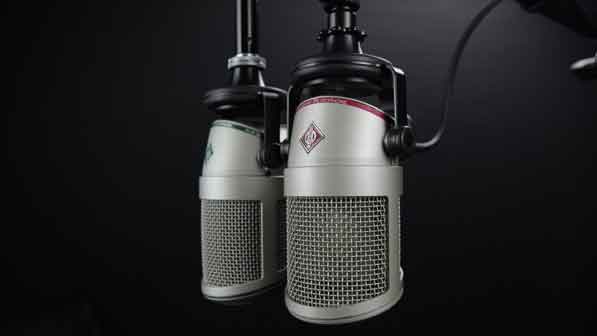• 7 TIPS TO IMPROVE THE AUDIO QUALITY OF YOUR VIDEO •

1. Avoid background noise - Listen to the environment before shooting.
This might sound obvious, but try to capture your recording as clean as possible and try to avoid any background noise. Bring your microphone(s), recorder and headphones with you and check the location before shooting. You want to reduce ambient sound (traffic, wind, background conversations, aeroplanes, construction works etc) as much as possible. Listening through a microphone with headphones is different then listening with your ears. Your subconscious blocks out many sounds like humming refrigerators, air conditioners and even the sound of a clock ticking. So turn off all noisy electrical appliances while shooting.
2. Listen to the acoustics
Recording in a room with a lot of echo and reverb can be tricky. Especially hard and smooth surfaces like tile floors or bare walls can result in unwanted reflections and echoes. Choosing a room with good acoustics is therefore very important for the sound quality. Even within a room there can be places that sound better then other places within the same room. Some materials are great for absorbing sound waves and can help reduce reflections, echoes and reverb. Some examples are: soft furnishings, rugs, bookcases and curtains. You might need to make some adjustments to the location so that sound waves are absorbed. If you're planning on recording more videos in the same room you might want to consider investing in special acoustic foam panels. If it's a one time recording you can also be creative and use sound blankets or materials like mattresses, towels, carpets, curtains, plants, clothes to create obstacles or walls that minimise the ambience.
3. Use the right microphone for the right situation
Most modern cameras and smartphones have okay built-in microphones, but they often aren't the best option and don't provide the best quality. Because they're in-built microphones you can't always point them to the audio source. For a great, clear and bright sound it's probably always better to use a good external microphone and point this at the source. By placing the external microphone close to the source it becomes the most audible source and unwanted background noises will be less present. There is not one microphone that is the best option for every situation. You have all kinds of microphones with different polar patterns, different sensitivity, frequency response and so they all haver their own pros and cons.
4. Use quality headphones
Microphones are very sensitive. Any movement or noise in the room will be recorded and can cause unwanted sounds. When you use your ears to listen to the sound the on set, a lot of these sounds won’t attract your attention. By wearing proper headphones you will only hear the recorded sound. This way you will notice if any unwanted sounds are recorded. The headphones that make me very are the Beyerdynamic DT 770 Pro.
5. Record a room tone
After recording a clean dialogue, don’t forget to record what is called a ‘room tone’ or ‘wild track’. Ask everyone to stand still and be quiet. Record 60 seconds of the ambience. This recording can be very useful. Imagine you have made a great shot but in the background there are unwanted noises like ambulance sirens. You can still save this shot by using the room tone recording. Also make separate recordings of individual noises that happen during the scene. Now you can build up layers of audio and adjust the levels independently to create a convincing mix.
6. Get rid of low-end noise in dialogue recordings.
All microphones sound different but, except for epic, dramatic voiceovers, anything at or below a frequency of 80Hz can be rolled off. This way you will get rid of rumbles, hums, wind and other low-end noise you don’t need in your dialogue.
7. Add presence and brilliance to your dialogue.
It's important to try to capture the source as good as possible. Preventing audio problems is always better then to fix them later on. But sometimes you can improve your sound recording by using an EQ. With EQ you can add some brilliance, sparkle and clarity to your dialogue or make it sound less boxy or muddy. Make sure you don’t cut or boost frequencies to much, because this will make the sound unnatural. For a better explanation about cutting or boosting which frequencies you can read this article.
